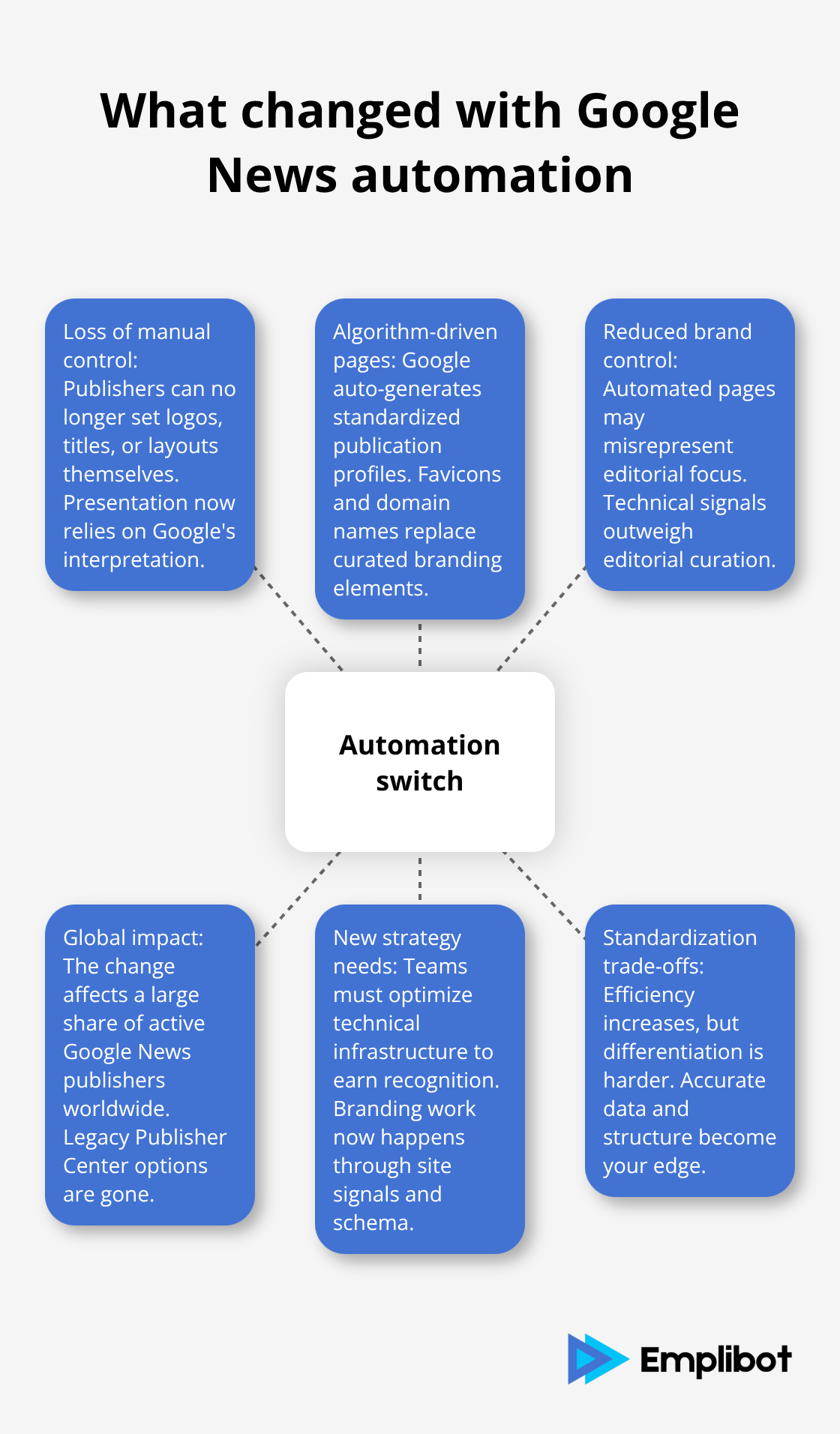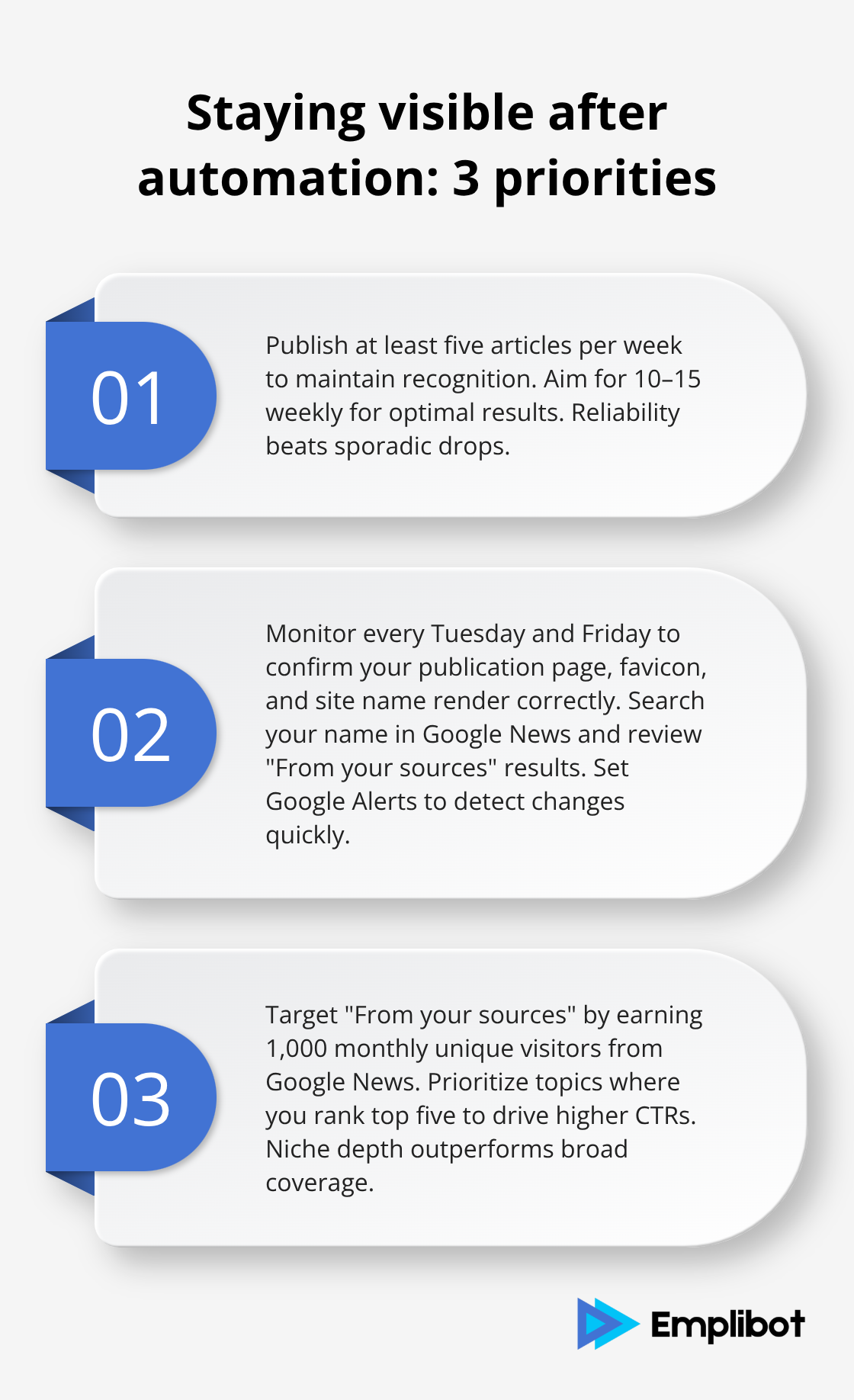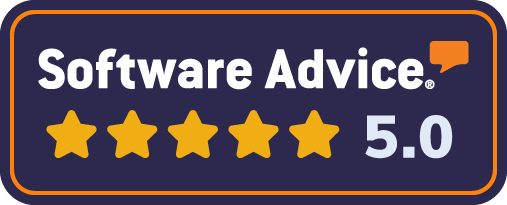Google News automated publication pages became the new standard in late March 2025, replacing the manual Publisher Center system that publishers relied on for years.
We at Emplibot have tracked this shift closely as it impacts how news sites appear across Google’s news surfaces. Publishers now face new requirements to maintain visibility and trigger algorithmic recognition in this automated environment.
Contents
ToggleWhat Publishers Lost in the Automation Switch
The End of Manual Control
Google News eliminated Publisher Center’s manual publication pages in late March 2025, removing direct control over how news sites appeared in search results. Publishers previously customized logos, publication titles, and page layouts through the Publisher Center interface. This manual system allowed newsrooms to craft their brand presentation and manage publication details with precision. The automated replacement strips away these customization options and forces publishers to rely entirely on Google’s algorithmic interpretation of their sites.

Algorithm-Driven Publication Generation
The new system auto-generates publication pages and uses site favicons and domain names instead of publisher-selected elements. Google’s automation scans websites to extract organizational information and creates standardized publication profiles without human intervention. This shift affects news publishers globally who used the Publisher Center system, representing a significant portion of Google News’ active publisher base.
Loss of Brand Identity Control
Publishers report concerns about brand identity as automated pages may not accurately represent their editorial focus or organizational structure. The algorithm prioritizes technical site elements over editorial curation and fundamentally changes how news organizations appear in Google’s ecosystem. Publishers must now optimize their technical infrastructure rather than manage publication presentation directly.
This technical shift requires new strategies to maintain visibility and reader recognition in automated news surfaces, which leads directly to understanding what publishers need to implement for success in this new environment.
What Technical Elements Must Publishers Optimize Now
Publishers must focus on three technical elements that Google’s automated system uses to generate publication pages. Your site’s favicon must render cleanly at 16×16 and 32×32 pixels because Google extracts this directly for publication identification. The site name in your HTML title tag becomes your publication name in Google News, so avoid generic terms like Blog or News and use your actual brand name. Sites with unclear favicons or generic site names experience lower recognition rates in automated publication generation.
Masthead and About Page Requirements
Your masthead must appear prominently on every page with consistent brand elements and publication name. Google’s automation scans for editorial mastheads to verify publication legitimacy and establish authority signals. The About page requires specific elements including editorial mission, contact information, and staff listings with clear authorship attribution. Publishers without dedicated About pages see fewer automated publication page approvals.

Your About page should include Organization schema markup with publisher details, founding date, and editorial focus to help Google’s systems categorize your publication correctly.
Schema Implementation Standards
Organization schema markup becomes mandatory for automated publication recognition. Add publisher information, logo URLs, and social media profiles directly to your schema markup because Google’s automated system relies entirely on structured data for publication profiles. Article schema must include author information, publication date, and article type classification. Publishers who implement complete schema markup see higher visibility rates in Google News surfaces compared to sites without proper structured data implementation.
Technical Infrastructure Optimization
Your site’s technical foundation determines how Google’s automation interprets your publication. Clean HTML structure with proper heading hierarchy (H1, H2, H3) helps the algorithm understand your content organization. Fast loading speeds and mobile responsiveness affect how Google’s crawlers access and process your pages for automated publication generation.
These technical optimizations create the foundation for automated recognition, but maintaining consistent visibility requires strategic content practices that work with Google’s new algorithmic approach.
How Do You Stay Visible After Automation
Content Cadence Requirements
Google’s automated publication system rewards consistent content schedules over sporadic drops. Sites with irregular publishing schedules experience decreased visibility compared to sites maintaining predictable content cadences. The algorithm interprets steady content flow as editorial reliability and prioritizes these publications in automated rankings.
Publishers must publish at least five articles weekly to maintain algorithmic recognition. Optimal results occur at 10-15 articles per week. Your publication cadence becomes your primary signal for automated visibility since manual curation no longer exists.

Weekly Google News Monitoring Protocol
Establish a routine that checks your publication’s appearance across Google News surfaces every Tuesday and Friday. Search for your publication name directly in Google News to verify your automated page displays correctly with proper favicon and site name.
Monitor the “From your sources” section by searching topics relevant to your coverage area and check if your content appears in personalized results. Publishers who track their Google News presence weekly identify visibility drops faster than those who check monthly.
Set up Google Alerts for your publication name combined with “Google News” to catch any algorithmic changes that affect your automated page generation. This approach helps you respond quickly when Google’s automation misinterprets your site elements or when competitors gain visibility advantages.
Triggering From Your Sources Recognition
The “From your sources” feature requires Google’s algorithm to recognize user engagement patterns with your content. Publishers need at least 1,000 monthly unique visitors from Google News to trigger consideration for the algorithm.
Your content must generate strong click-through rates from Google News surfaces to maintain algorithmic preference signals. Focus your content strategy on topics where you consistently rank in the top five Google News results (the algorithm prioritizes publications with established topical authority).
Publishers who cover niche topics with focused expertise see higher “From your sources” inclusion rates than generalist publications that cover broad news categories. The algorithm favors depth over breadth in automated publication recognition. Understanding the integration of marketing automation helps maintain brand relevance across multiple channels while leveraging automation keeps your content strategy competitive in this evolving landscape.
Final Thoughts
Google News automated publication pages represent a permanent shift that publishers must accept rather than resist. The technical requirements we outlined create a foundation for sustained visibility, but success depends on consistent execution rather than one-time optimization efforts. Publishers who adapt their workflows to support automated systems will see improved content distribution efficiency within six months.
The algorithm rewards reliability over creativity and makes steady schedules more valuable than sporadic high-quality pieces. This standardization actually benefits smaller publishers who previously lacked resources for manual Publisher Center management. Your newsroom workflow should now prioritize technical infrastructure maintenance alongside editorial quality.
Weekly monitoring becomes as important as daily content creation because automated systems require constant verification to maintain optimal performance. The automation trend extends beyond Google News into broader content marketing strategies. Publishers who automate their WordPress blog and social media distribution can maintain competitive content cadences while focusing editorial resources on quality and audience engagement (this approach aligns perfectly with Google’s automated publication requirements while building sustainable growth across multiple platforms).










